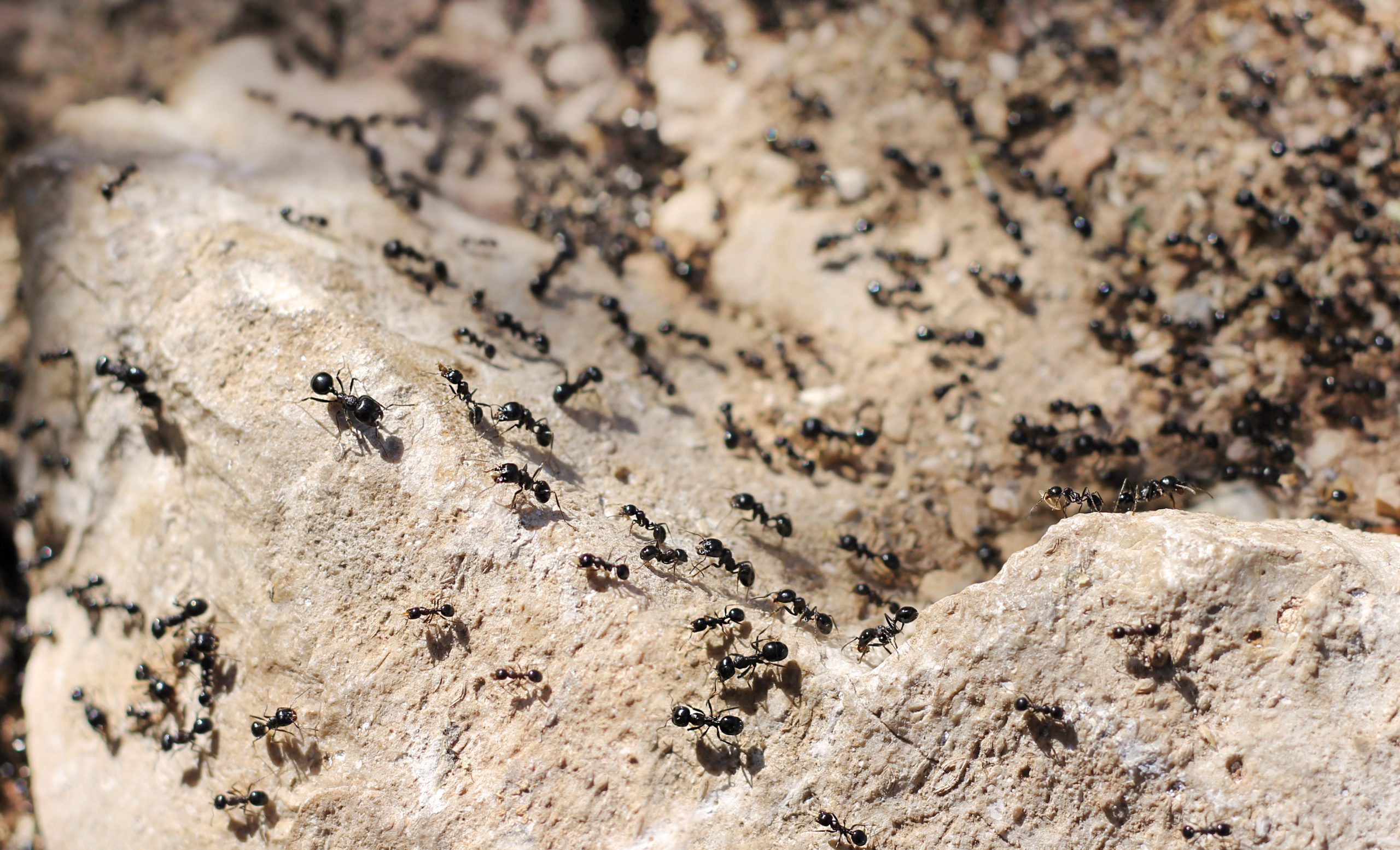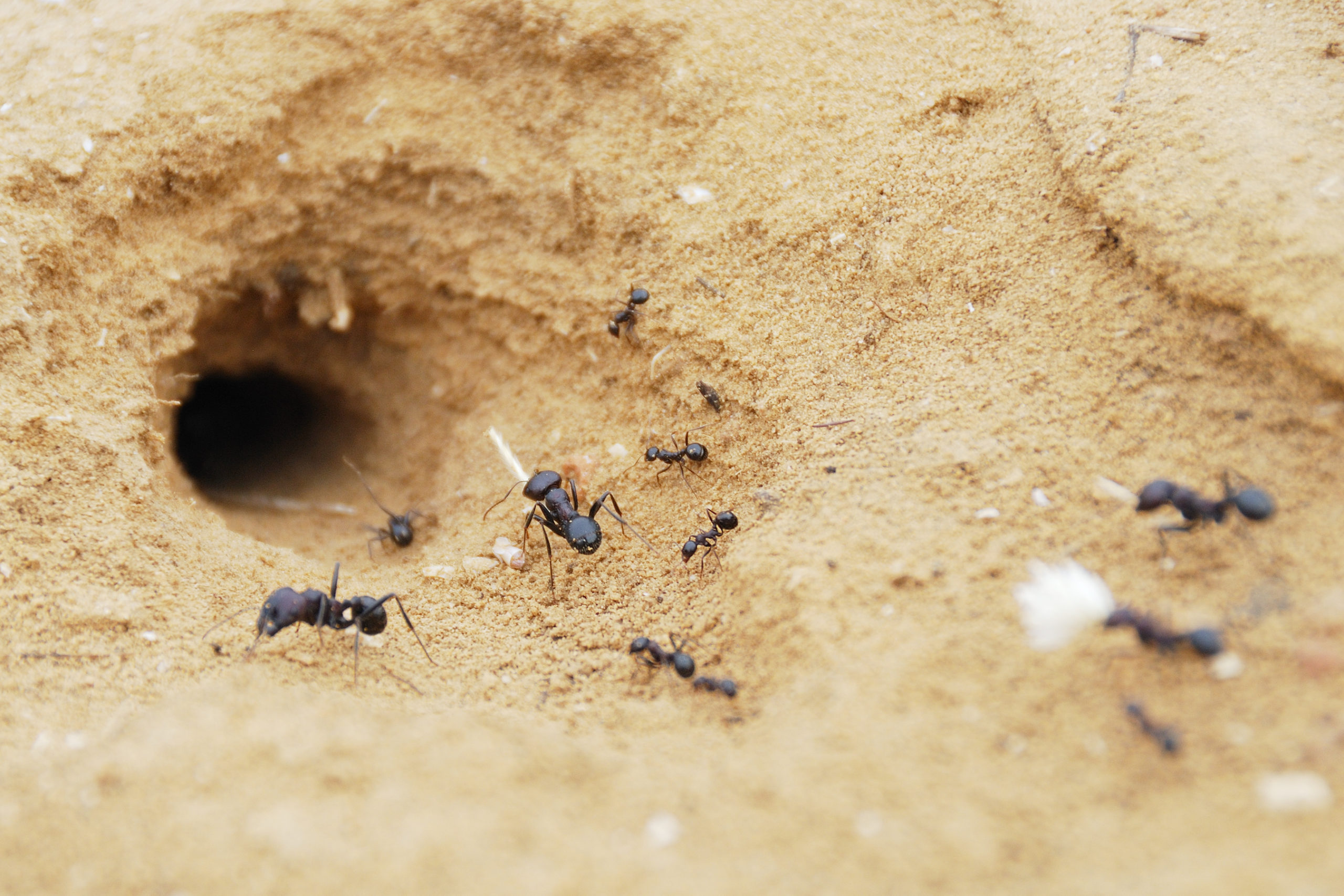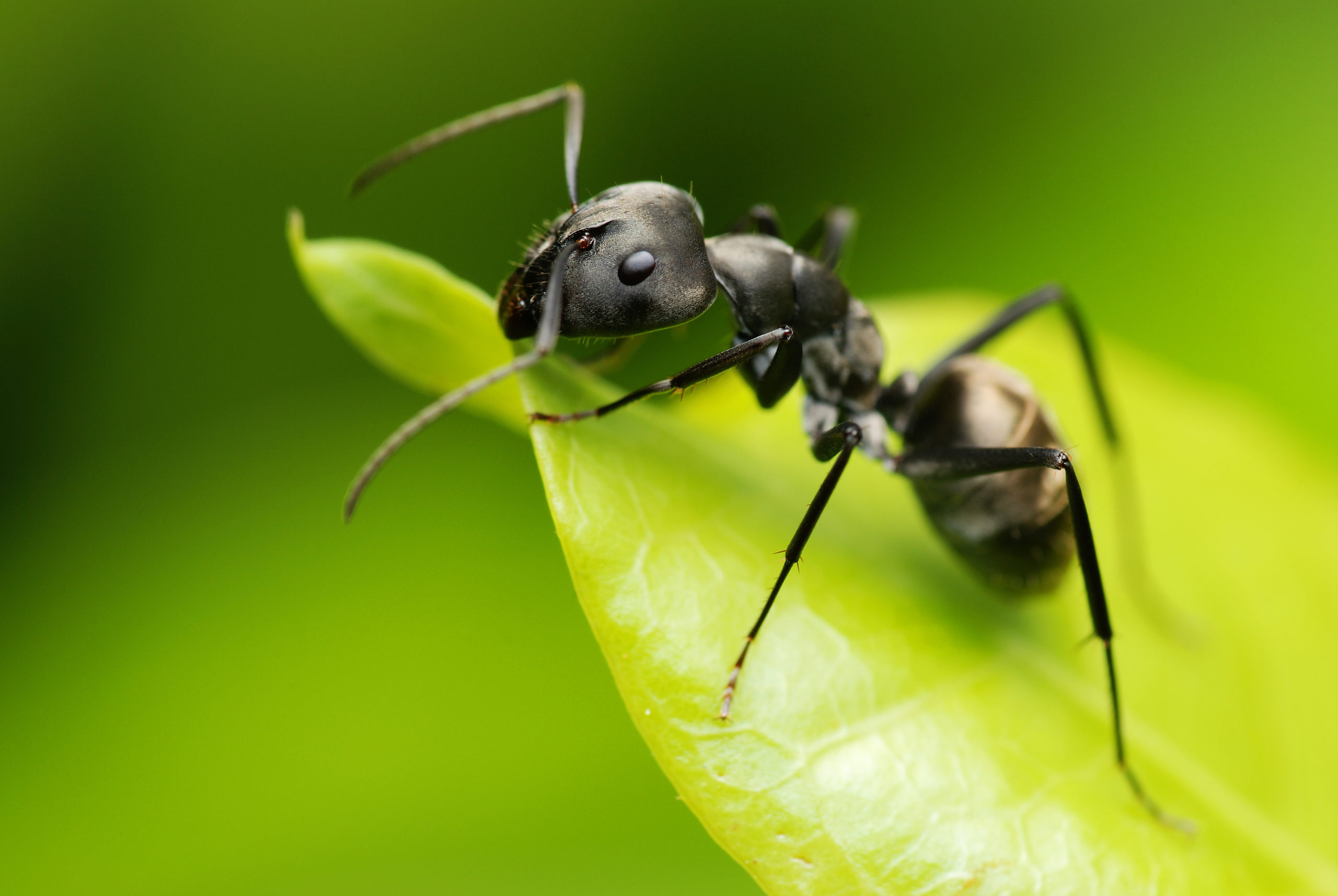How Large Can Ant Colonies Get?
How Large Can Ant Colonies Get?
Ants often seem to come in endless droves. Is it because they have massive colonies, giant ant hills, and/or an impressive rate of longevity? In today’s blog, we explore all these different measurements of ant colonies.

Ant Populations
Ants inhabit Earth in truly astronomical numbers. Today, there are approximately 1 quadrillion (1,000,000,000,000,000) ants on Earth, made up of 12,000 different species. With such an insanely large population, these pests actually massively outnumber all other creatures on our plant. In fact, in comparison, there are only a mere 7.85 billion (7,850,000,000) humans alive today.
Depending on the species of ants, how established the colony is, and the quality of the environment that they inhabit, individual colonies can consist of a few hundred to even over a million individuals.

Colonies and Hills
Ants operate within vast populations and strategically collaborate with all their colony members to build intricate ant hills that they keep well sustained with food, water, etc. The contents of an ant hill partially depend on the geographic location of the colony and what is available in that area. Typically, they are made up of a combination of soil, sand, clay, and other small pieces of debris that are readily available. The interiors are a series of complex, interlaced tunnels with various chambers opening up to provide some larger areas inside the nest. These chambers have a variety of uses including storage areas for food, nurseries for ant larvae and their caretakers, and even areas for ants to simply rest.
The exact design of both the interior and exterior of an ant hill depends on the species of ant that has constructed the hill. Some species will create small little hills that lead down into their maze of tunnels, while others will construct tall, resolute towers of soil and clay – somewhat resembling a mini volcano in shape. Likewise, their interiors can vary drastically, but most are surprisingly large in order to accommodate their large, growing colony.
In rare cases, anthills that are large enough can end up connecting with one another. This requires cooperation between colonies for them to construct into one another’s homes and expand the newly merged nest. One of the largest combined nests ever discovered was in Europe and stretched over 3,600 miles.

The Longevity of a Colony
The longevity of a colony/ant hill is foremost dependent on the environment in which the hill is built as many environments can put the nest at risk of destruction. However, in the case that ant hills are in protected areas, they can exist for a shocking number of years; a feat that is made possible all thanks to their queen. Depending on the particular species, as well as the conditions in which she lives, the average queen ant can live between 10-30 years. While worker ants live significantly less long (1-7 years on average), the colony as a whole will survive as long as the queen does. However, in some cases, when a queen passes on, new ones replace them, using the pre-constructed hill and expanding it. In cases such as this, colonies can reportedly last for several hundred years.

Citations
Ant Hills (no date) Antkeepers. Available at: https://www.antkeepers.com/facts/ant-colony/ant-hill/ (Accessed: October 2020).
Ant Information & Fun Facts About Ants (N/A) Myrmecology. Available at: https://www.myrmecology.org (Accessed: June 2020).
Cetintas, R. (1998) Chapter 34: Longest Adult Life, The University of Florida Department of Entomology & Nematology. Available at: https://entnemdept.ufl.edu/walker/ufbir/chapters/chapter_34.shtml (Accessed: April 22, 2021).
A Colony of 250,000 Ants Call the Average Anthill Home – Here’s What is Inside Their Mound (2020) MSN. Available at: https://www.msn.com/en-us/travel/news/a-colony-of-250000-ants-call-the-average-anthill-home-—-heres-what-inside-their-mound/vp-BBZyqv0 (Accessed: October 2020).
C, R. (2018) How Many Ants Live on Earth and # More Interesting Ant Facts, Ants.com. Available at: https://ants.com/how-many-ants-live-on-earth-and-more-interesting-ant-facts/ (Accessed: April 7, 2021).
Current World Population (no date) Worldometer. Available at: https://www.worldometers.info/world-population/ (Accessed: April 22, 2021).
Sanders, A. (2018) How Does an Ant Build Its Hill?, Sciencing. Available at: https://sciencing.com/ant-build-its-hill-4587980.html (Accessed: October 2020).
8 Creative Ways to Have a Pest-Free Fourth of July
8 Creative Ways to Have a Pest-Free Fourth of July 8 Creative Ways to Have a Pest-Free Fourth of July Summary: The Fourth [...]
A Simple Guide to Preventing Stinging Pests
A Simple Guide to Preventing Stinging Pests A Simple Guide to Preventing Stinging Pests Summary: Stinging insects are more active in warm weather, [...]
These 10 Natural Mosquito Repellents Can Actually Help
These 10 Natural Mosquito Repellents Can Actually Help These 10 Natural Mosquito Repellents Can Actually Help Summary: Natural mosquito repellents are easier to [...]
How to Get Rid of Carpet Beetles
How to Get Rid of Carpet Beetles How to Get Rid of Carpet Beetles Summary: Carpet beetles are sneaky pests that don’t usually [...]
How Do Roaches Affect Asthma and Allergies?
How Do Roaches Affect Asthma and Allergies? How Do Roaches Affect Asthma and Allergies? Summary: It’s no secret that pests impact human health, [...]
These 5 Carnivorous Pests Might Surprise You!
These 5 Carnivorous Pests Might Surprise You! These 5 Carnivorous Pests Might Surprise You! Summary: There are many eco-friendly ways to prevent pests, [...]

